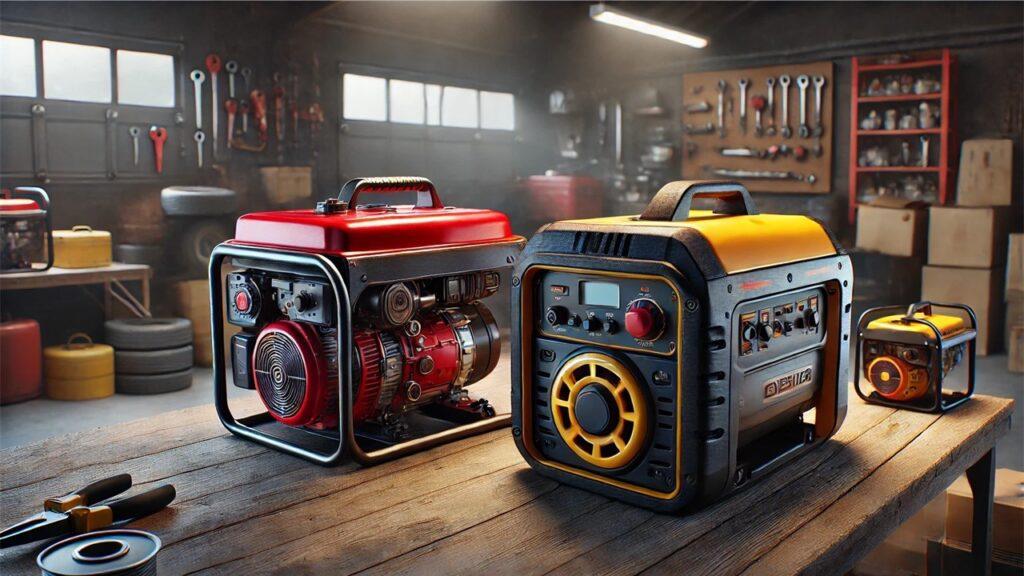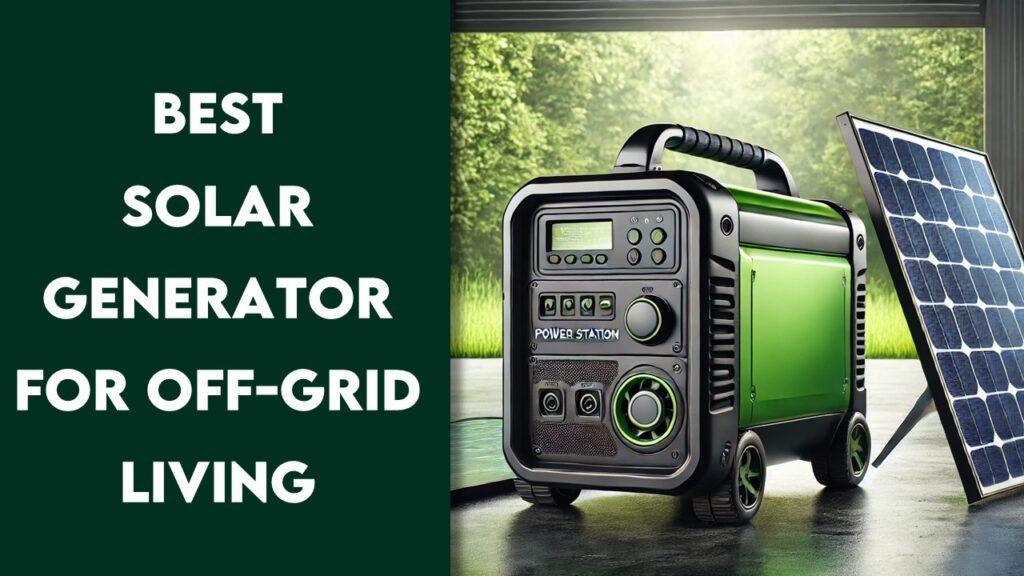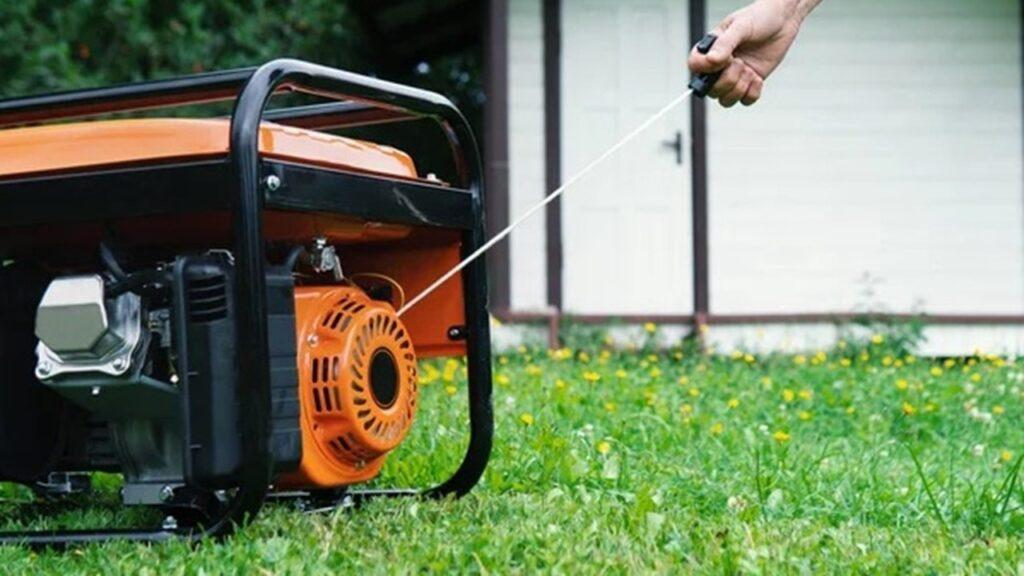
Refueling your generator might seem like a simple task, but it’s more like preparing a delicate recipe; every step needs to be precise to ensure safety. Just as you wouldn’t rush when measuring ingredients for a cake, you shouldn’t rush when refueling your generator. A little mistake can lead to big problems like spills or even fires. That’s why it’s important to know the right way to do it! This article on how to refuel your generator safely will guide you through each step of safely refueling your generator. We’ll cover everything from choosing the right fuel to what you should do if you accidentally spill some. By the end, you’ll be a pro at keeping your generator running smoothly and safely!
Knowing Your Generator’s Fuel Type
Imagine your generator as a pet that prefers specific types of food, where each type of food corresponds to a different kind of fuel. Some generators eat gasoline, others prefer diesel, some dine on propane, and a few are hooked up to a steady diet of natural gas. Like feeding the right diet to the right pet, using the right fuel safely is crucial for the health and longevity of your generator.
- Gasoline: Most common type of fuel for portable generators but it’s also very flammable. To handle gasoline safely, always refuel in a well-ventilated area to prevent fume accumulation. Also, ensure the generator has cooled down completely before you start refueling to avoid any fire hazards.
- Diesel: While diesel is less flammable than gasoline, it still requires careful handling. The key to safely refueling your diesel-powered generator is similar to gasoline: refuel only when the generator is cool and in an open area where fumes can dissipate safely.
- Propane: Propane generators are unique because the fuel is stored under pressure in liquid form. It’s crucial to check all connections for leaks each time you connect a new tank. Always switch propane tanks outdoors or in a well-ventilated area to minimize the risk of gas buildup.
- Natural Gas: Generators that run on natural gas are usually connected to the home’s gas supply and don’t typically require manual refueling. The primary safety concern with natural gas generators is ensuring that the installation and all connections are secure and leak-free.
Knowing which type of fuel your generator uses and handling it with care ensures not only the safe operation of your generator but also extends its lifespan. Just like feeding the right diet to your pet keeps it healthy, proper fuel handling keeps your generator running smoothly and safely.
Pre-Refueling Safety Checks
Before refueling your generator, it’s essential to conduct several safety checks to ensure everything is set for a safe and smooth process. Think of these checks as the necessary precautions you take before starting an important project—they ensure everything goes as planned without any hitches.
- Inspect for Leaks: Start by thoroughly examining your generator for any signs of fuel leaks. Check the fuel lines and the tank itself for any damage or wear that might cause leaking. It’s like ensuring there’s no hole in a water bucket before you fill it up. If any leaks are detected, it’s crucial to repair these first to prevent any fuel mishaps during refueling.
- Cool Down Period: Just like allowing a hot laptop to cool down before you pack it away, your generator needs to cool down after use before refueling. This cooling period is vital to reduce the risk of fuel vaporizing on contact with hot surfaces, which could lead to dangerous situations. Wait until the generator is completely cool to the touch, which might take a few minutes.
- Checking the Fuel Level: This is akin to measuring ingredients precisely before baking. Before you pour more fuel into your generator, check how much fuel is already there. This step prevents overfilling, which can cause spills or pressure build-up in the fuel tank. Especially on warm days, leaving some space for fuel expansion is essential.
Running through these pre-refueling checks is like doing your homework before a big test—they prepare you for a safe and successful refueling. Ensuring everything is in order and safe before you begin is key to maintaining your generator’s efficiency and longevity.
Safe Refueling Practices
Now that you’ve completed the necessary safety checks, it’s time to actually refuel your generator. This process, when done carefully, ensures that your generator continues to operate efficiently and safely. Think of refueling like watering a plant—too little or too much can be problematic, and it needs to be done with care.
- Using Proper Containers: Always use containers that are designed for fuel storage and handling. These containers are made to prevent spills and safely manage the vapors that fuels can emit. It’s like using a watering can for plants; the right tool makes the job easier and safer.
- Environment Considerations: Choose an open, well-ventilated area for refueling your generator. This setting ensures that any accidental spills are contained and that vapors do not accumulate. It’s similar to painting a room with the windows open, allowing the fumes to escape and keeping the air safe to breathe.
- Step-by-Step Refueling Process: Refueling should be methodical to ensure safety. Start by grounding the generator to prevent static electricity buildup. Then, slowly pour the fuel to minimize splashing. Always keep an eye on the fuel level, and stop before it reaches the top to allow space for expansion. This is much like filling a bathtub, where you watch closely to ensure it doesn’t overflow.
Following these detailed steps for refueling can significantly reduce the risk of accidents and ensure that your generator remains a reliable source of power. Like following a recipe to the letter, taking these precautions helps you achieve the best results without any unexpected issues.
Post-Refueling Procedures
After refueling your generator, the care you take can be just as important as the refueling process itself. This phase is about making sure everything is settled and safe before you start your generator again, similar to cleaning up the kitchen after cooking a meal to ensure everything is tidy and safe.
- Secure the Fuel Cap: Just as you’d make sure the lid on a food container is tight to prevent spills, it’s crucial to securely fasten the fuel cap on your generator. This prevents any fuel leakage or vapor release, ensuring the safety and efficiency of your generator.
- Proper Storage of Fuel Containers: Once refueling is complete, store your fuel containers properly to avoid any safety hazards. Place them in a cool, dry area away from direct sunlight or any heat sources. This is akin to storing perishable food in the fridge—it prevents spoilage and maintains safety.
- Observing the Generator: Before restarting your generator, take a moment to observe it for any unusual signs. Look for leaks, listen for odd noises, and smell for unusual odors. It’s like doing a final check of your appliances to ensure they’re working correctly before you leave the house.
Taking these post-refueling steps ensures that your generator is ready to perform safely and efficiently. It’s the equivalent of double-checking your work on a project to make sure everything is in order. Ensuring your generator is properly cared for after refueling will help maintain its longevity and reliability.
Emergency Procedures
Even with the best preparations, emergencies can happen when refueling your generator. Being prepared to handle such situations effectively is crucial, akin to knowing first aid in case of an accident. This section will cover the essentials of managing potential emergencies during and after refueling your generator.
- Handling Spills: In case of a fuel spill, act quickly but calmly. First, ensure no sources of ignition are nearby. Use an appropriate absorbent material like sand or commercial absorbents to contain and clean the spill. Dispose of the used materials according to local environmental regulations. It’s similar to cleaning up a broken jar in the kitchen—you want to do it safely and thoroughly to prevent any further issues.
- Fire Safety: If a fire occurs, knowing what to do can be lifesaving. Keep a fire extinguisher rated for chemical fires nearby whenever you refuel or operate your generator. Never attempt to extinguish a fuel fire with water. If the fire is uncontrollable, evacuate the area immediately and call emergency services. This is like having a plan in place when you practice a fire drill.
- When to Call for Help: Sometimes, the safest action is to seek professional help. If you encounter a fuel leak you can’t contain, a fire, or any other hazardous situation during or after refueling, call your local fire department or emergency services. This step is like calling a plumber when you have a major water leak—it’s best to rely on professionals.
Knowing how to respond to emergencies while dealing with generator fuel can make a significant difference in ensuring personal and property safety. These guidelines are your toolkit for managing unexpected situations, providing peace of mind that you are prepared to handle them effectively.
Regular Maintenance to Ensure Safe Refueling
Just like taking care of a car with regular oil changes and check-ups, maintaining your generator ensures it runs safely and efficiently. Regular maintenance is key to preventing emergencies during refueling and extending the life of your generator. Here’s how you can keep your generator in tip-top shape.
- Routine Inspections: Regularly inspect your generator for any signs of wear and tear. Check hoses, fuel lines, and connections for cracks, leaks, or any damage that might worsen over time. This is similar to checking the tires and brakes on your car; it’s about catching problems before they become serious.
- Replacing Parts: Just as you might replace a worn-out battery in a clock, periodically replacing parts in your generator can prevent future issues. Focus on parts that are critical to safe refueling and operation, like fuel caps, filters, and lines. Using manufacturer-recommended parts ensures compatibility and reliability.
- Professional Servicing: Even the most diligent generator owners need professional help sometimes. Having your generator serviced by a professional at least once a year is like visiting the doctor for a check-up—it ensures everything is functioning properly and can help catch issues you might miss.
Regular maintenance not only helps ensure safe refueling, but also maximizes the efficiency and longevity of your generator. By following these steps, you’re not just preventing future problems; you’re also ensuring that your generator is ready and safe whenever you need it.
Wrapping It Up!
Refueling your generator safely is akin to following a meticulous recipe—accuracy and attention are crucial for success. First, understanding the specific fuel type your generator uses—be it gasoline, diesel, propane, or natural gas—is fundamental for appropriate handling and maintenance. Performing pre-refueling checks is critical; these include inspecting for leaks, ensuring the generator is adequately cooled, and verifying fuel levels to prevent overfilling.
Adhering to safe refueling practices, such as using proper fuel containers, refueling in well-ventilated areas, and following systematic procedures, minimizes potential risks. Post-refueling care involves securing the fuel cap, safely storing fuel containers, and monitoring the generator for any irregularities before restarting it. Additionally, being prepared for emergencies with knowledge of handling fuel spills and fires, and understanding when to seek professional assistance, is imperative.
Regular maintenance, including routine inspections, timely parts replacement, and professional servicing, ensures your generator operates safely and reliably. By embracing these practices, you ensure that your generator remains a dependable power source, ready to serve you whenever needed, while prioritizing safety. Whether preparing for adverse weather, managing power outages, or simply ensuring readiness, these guidelines will help you refuel and maintain your generator effectively and safely.
Related FAQs
How Long Should I Wait Before Refueling My Generator After Use?
You should wait until the generator is completely cool to the touch, which usually takes about 15–30 minutes depending on the model and ambient temperature.
What Type Of Fire Extinguisher Should I Keep Nearby When Refueling?
It’s best to have a Class B fire extinguisher on hand, as it is suitable for flammable liquids like gasoline and diesel.
Can I Refuel My Generator While It Is Running?
No, you should always turn off your generator and allow it to cool completely before refueling to avoid fire risks.
Is It Safe To Store Extra Fuel In My Garage?
Store extra fuel in a cool, well-ventilated area away from any potential sources of heat or ignition, not in a garage where fumes can accumulate.
What Should I Do If I Accidentally Overfill The Fuel Tank?
Immediately stop refueling, clean up any spills with appropriate materials, and allow any fumes to dissipate before starting the generator.
At our core, we’re a group of passionate generator, inverter, solar energy, battery enthusiasts. We dive deep into the world of tech, especially when it’s about powering your home, RV or outdoors. We try to provide as much value to the readers with our information and how to blog articles as possible. For affiliate articles our honest and transparent reviews of essential tech products are rooted in real-world experience. We take great satisfaction in offering unbiased evaluations, ensuring that you can make informed decisions when investing in your desired techs.



![What Is A Solar Inverter? [How It Works, Types & Choosing The Right One]](https://www.powerelectrichub.com/wp-content/uploads/2024/08/What-Is-a-Solar-Inverter-1024x576.jpg)
